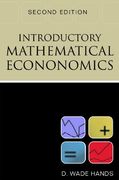Question
An individual lives forever from t = 0, 1, ...,. Think of the individual as actually consisting of different personalities, one for each period. Each
An individual lives forever from t = 0, 1, ...,. Think of the individual as actually consisting of different personalities, one for each period. Each personality is a distinct agent (time-t agent) with a distinct utility function and constraint set. Personality t has the following preferences u (ct) + X j=1 j u (ct+j ) where u () is bounded twice differentiable, increasing and strictly concave function of consumption; (0, 1] and (0, 1). An individual with these preferences is called a hyperbolic discounter. At each t, let there be a savings technology described by kt+1 + ct f(kt) where f is a standard production function satisfying Inada conditions. There is no other source of income. Assume that timet personality decides on consumption at time t only, and this consumption decision is function of kt (i.e. c (kt)) only. Assume that every time-t personality uses the same consumption function. Let W (kt) X j=o j u (c (kt+j )) and where {kt+j} j=0 is defined recursively by kt+j+1 = f (kt+j ) c (kt+j ), with kt given. A Markov equilibrium is then a function w that is a fixed point of the following functional operator T: to compute TW for any W we first find c (k) arg max {u (c) + W (f (k) c)} and then define T W(k) c[0,f(k)] max {u (c) + W (f (k) c)} (1 ) u (c (k)) For any fixed point w = T w we may refer to the associated c (k) as the equilibrium Markov strategy. (To avoid complications, assume that the set arg max {u (c) + W (f (k) c)} is a singleton. We could modify things slightly to deal with the case where it isn't). (a) What is the main conflict between different personalities? For which values of do they all agree about the optimal plan? (b) Interpret the operator T. (c) If = 1, is T a contraction mapping [Hint: use Blackwell sufficient conditions for a contraction]? How many (Markov) equilibria exist? (d) For < 1, can you say that T is a contraction mapping using Blackwell conditions? Can you say there is a unique (Markov) equilibrium? What is different between (c) and (d)? (e) Suppose now that u (c)=log c and f (k) = Ak with (0, 1). Verify that one possible fixed point for T is of the form W (k) = a log k + b. Determine a and b. What is the equilibrium consumption policy? How does it changes with ? (f) (Observational Equivalence) Suppose there is another individual, call him an exponential consumer, with a e = 1 and ue (c)=ln (c). Can you find a discount rate e for this exponential consumer such that with f (k) = Ak, the optimal consumption policy for this exponential consumer is the same as the equilibrium policy described in (e) for a hyperbolic consumer, with a given < 1 and ? What does this tell us about the ability to empirically separate a hyperbolic discounter from an exponential consumer?
Consider the neoclassical growth model with u (c) = c1/ (1 ) G (k, 1) = k and depreciation rate . (a) Using the linearized dynamics compute several tables showing the speed of convergence as functions of the parameters and (for = .97 and = .1). Use as a measure for the speed of convergence the half-life of the difference between capital and the steady state level of capital capital, 1 i.e. kt kss. That is, find the time t for which kt kss = 2 (k0 kss), denote this value by t, in general t will not be an integer. In the linearized model this number will not depend on k0.Now we will compute the actual non-linear dynamics and define a speed of convergence for it starting from some k0 [with the non-linear dynamics our measure may depend on k0]. Proceed as follows: find the actual non-linear policy function kt+1 = g (kt) by value function iteration numerically. Next compute a sequence for capital using g starting from k0. Using this sequence find the smallest value of t such 2 that |k |k0 kss| , denote this value by t, and define: t kss| 1 = (kt kss) t (k0 kss) 1 Next usin g this compute the half life of a system xt+1 = xt. This half-life is our summary statistic for the speed of convergence starting from k0. Inyour calculations use k0 = 2 kss [note that kss and thus k0 depends on the parameters]. (b) Perform this calculation for an interesting subset of the parameter values for which you computed the linear dynamics speed of convergence. Compare your results.
(a) Verify that V (k, ) = a1 log k + a2 log + a3 solves the Bellman equation and compute a1, a2 and a3 as functions of the parameters of the problem. Is this function the value function of the sequence problem, i.e. is V = V ? (b) What is the optimal policy rule for consumption? How does the optimal consumption rule change with and ? (c) Show that there is an alternative recursive formulation of this problem with a single state variable. In other words, produce a single state variable that is a sufficient statistic for the dynamic problem at any date t together with a functional equation that represents the problem using such a state variable. In such a formulation, can the state for t + 1 be chosen deterministically at t?
Step by Step Solution
There are 3 Steps involved in it
Step: 1

Get Instant Access to Expert-Tailored Solutions
See step-by-step solutions with expert insights and AI powered tools for academic success
Step: 2

Step: 3

Ace Your Homework with AI
Get the answers you need in no time with our AI-driven, step-by-step assistance
Get Started


